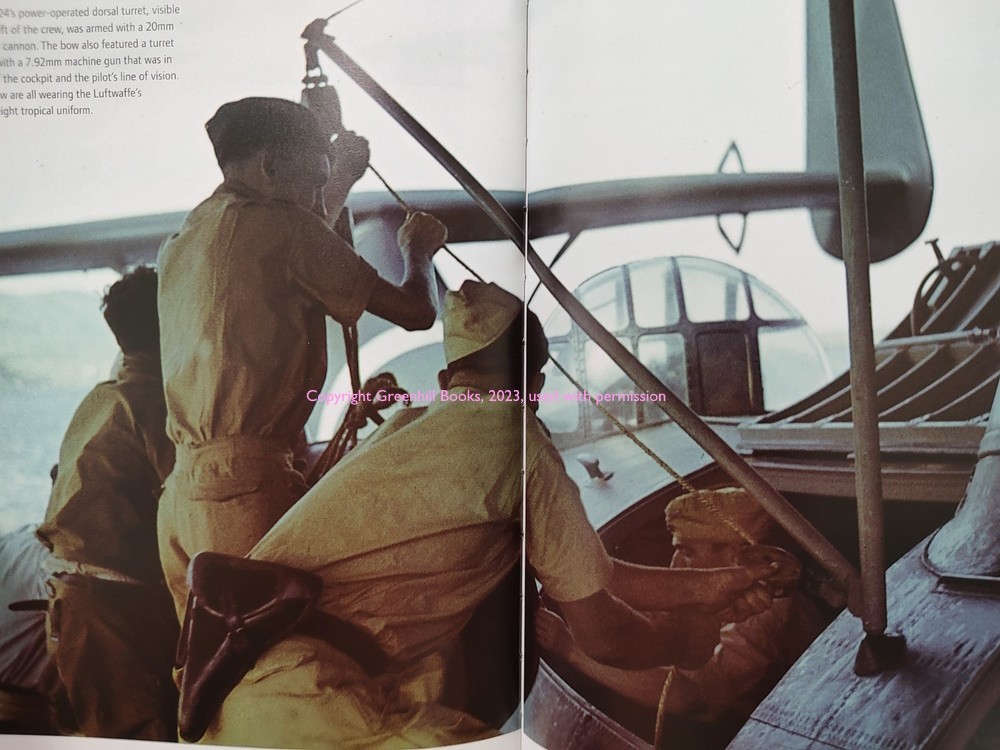
Introduction
Rommel's Afrika Korps in Colour Rare German Photographs from the Second World War by Ian Spring and Anthony Tucker-Jones is a new title from Greenhill Books. This hardcover book measures 6.8 x 9.7 inches and contains 288 pages with 250+ color photos. It is catalogued as IBSN 9781784388799.
An excerpt from the publisher's page tells us;
Taken from Ian Spring’s incredible digital archive of over 32,000 original color photographs dated between 1936 and 1946, more than 250 images in Rommel’s Afrika Korps In Color offer readers a vivid, detailed insight into this German expeditionary force and their long North African Campaign. Fascinating color photographs of German soldiers, weaponry, tanks and aircraft fill these pages, and are balanced by the equally captivating and rare photographs of the people and the landscapes of North Africa.
Modelers can find a gold mine of color reference and resources in this book. Original German color images found in my books over the decades never seemed to be as saturated as Kodacolor images. This book contains some photos just as "smooth" and with luminance rivaling the American film. The fascinating content presents a survey of Afrika Korps air, sea and land subjects: war scenes; scenery; equipment and ordnance; portraits; candid views of soldiers.
Contents
Introduction: The 'Desert Fox'
The Deutsches Afrika Korps
Operation Sunflower
The Desert War
The Kriegsberichter and Deputy Reichspressechef
This Remarkable Collection
Life and Death in North Africa
North Africa Chronology: Key Events
Part One: The Deutsches Afrika Korps Arrives
1 Preparations
2 Build-up in Tripoli
3 Meet the Locals
Part Two: Hardware of War
4 Panzer Group Afrika
5 Beware the '88'
6 Don't Spare the Suspension
Part Three: Out into the Desert
7 Baking at the Front
8 Rommel's Achilles Heel
9 Rest and Recreation
Part Four: War in the Skies
10 Seaplane to Tripoli
11 Tri-Motor Workhorse
12 Desert Aviation
Part Five: The Rise and Fall of the Deutsches Afrika Korps
13 Rommel Up Close
14 Defeat in Tunisia
Deutsches Afrika Korps Order of Battle
Sources and Further Reading
While the main event of this book are the color photos, I found the text interesting as well. Most of it is well known from the myriad of books chronicling the DAK (Deutsches Afrika Korps) although the text includes facts, first-hand anecdotes, journal and report excerpts, and research commentary. The first part references the 1953 book The Rommel Papers. The author includes insight to Rommel's reputation for acerbic interaction with his subordinates and superiors alike, as hinted by staff member Major Friedeick von Mellenthin;
Rommel was not an easy man to serve; he spared those around him as little as he spared himself.
It even includes a quip from Rommel's son Manfred concerning the Field Marshall's musical appreciation;
He learnt to play the violin and though he believed that this tuition was successful, the view was not shared by those who had to listen.
The author also spotlights Rommel's penchant for self-promotion with several excerpts from Lieutenant Berndt of the Propaganda Ministry, who helped ingrain Rommel in the German mind, as told by a Lieutenant Schmidt;
I saw then that he was contributing more than most people realized to the steadily growing Rommel legend. He took every opportunity of arranging photographs to be taken of the 'Desert fox,' for publication at home and in neutral countries. Rommel himself, as war correspondents will testify, readily allowed himself to be photographed. I noticed that he often deliberately fell into a pose that would make the photographer's task easier and more effective.
But this is a book encompassing the DAK beyond Rommel. As you saw in Contents above, subjects include personnel, equipment, ordnance, vehicles, scenery, tanks, civilians, ships, aircraft, architecture, mundane daily activities and battlefield scenes. Modelers can vividly see differences in uniform and equipment color variations side by side.
With the increasing release of civilian subjects and diorama detail items such as tables and chairs, wagons and farm implements, etc., modelers may be especially interested in the chapter Rest and Recreation.
One other thing about this book, it has an attached bookmark ribbon to help you find your favorite photo. Nice touch!
The Photos
Images range from profession portraits to amateur "grab shots." I did not count them but estimate half of the images are high-quality: focused; good lighting; expert color work. Every image features a caption, some being very descriptive.
Guns, tanks, soldiers, battlefields, softskins - plenty of images to feast your eyes upon. With more than 250 images to choose from as favorites, some I find particularly interesting are;
- Two-page scene of trying to hide 10 vehicles and numerous tents and dugouts in an open desert devoid of cover other than rocks
- Parade in Tunis featuring an olive-painted Panzer III
- Close-ups of a shot down American P-40
- Several images of ME 323 Gigant transports loading/unloading supplies and vehicles
- Sand storm
- A colonel and staff having lunch at the front
- Camels inspecting a lager.
I could go on but you would be scrolling down and down. I will simply state that I think these photos are the images I have wished existed over the decades. Take a look at these examples - your thoughts?





Conclusion
Greenhill Books' Rommel's Afrika Korps in Colour amazes me. The selection of images and scenes are varied and fascinating. Modelers can find great references for colors and variations thereof. I even appreciate the history lessons in the text.
Yes, I have been hoping that someday someone would share their cache of original Axis color photos. This book more than satisfied me and I eagerly made room on my reference shelf for it, and can not wait to start painting up some DAK models.
Certainly recommended.
Thanks to Casemate Publishers for providing this book. Please remember to mention to vendors and retailers that you saw this product here - on Armorama.


























